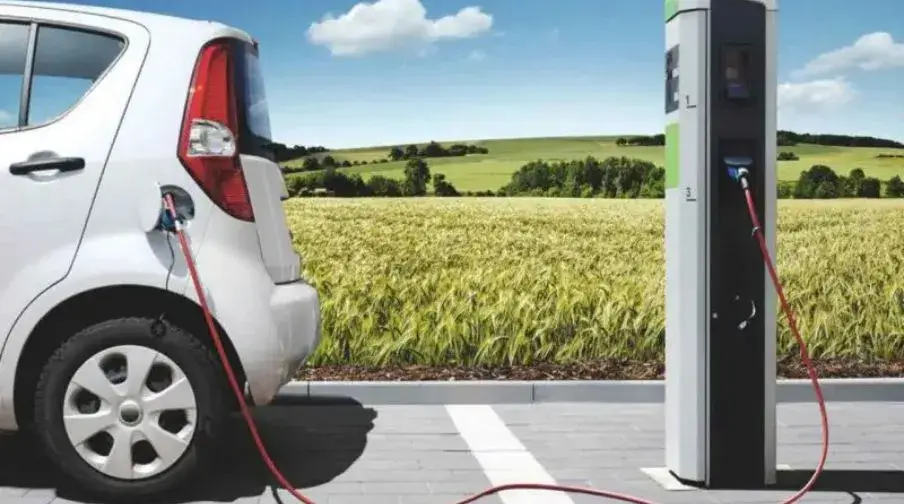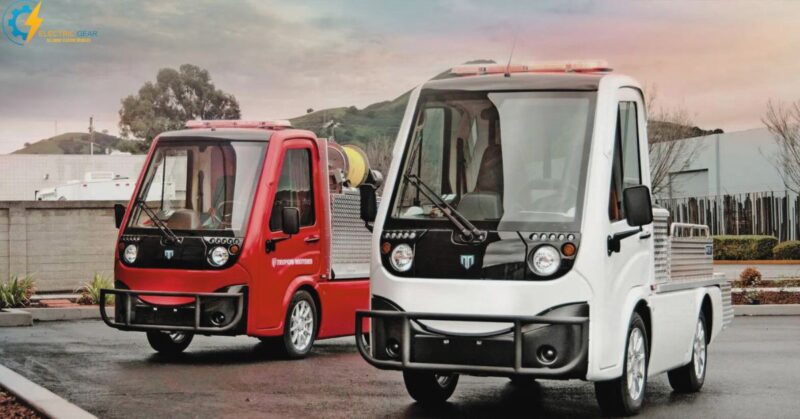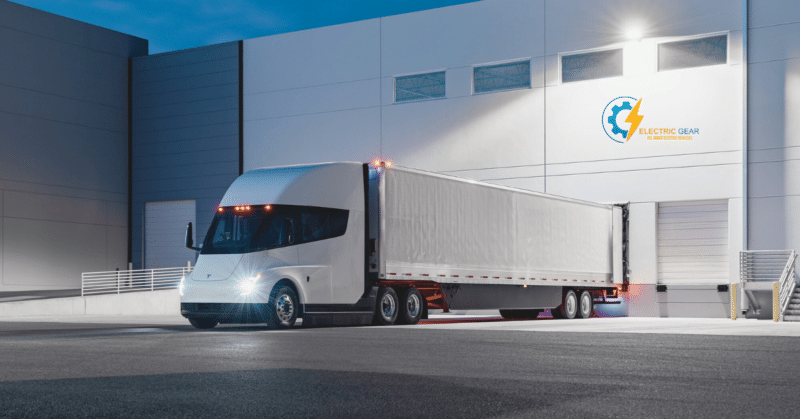Does Tesla use gas? It is a more frequently asked question by Tesla EV aspirants. Most people likely already know that Tesla cars are electric-powered, but that doesn’t mean the Tesla fleet is entirely gas-free.
Tesla cars only get power from large lithium-ion rechargeable batteries charged at charging stations. No gasoline-powered automobiles are in the Tesla lineup, and it has never been the case.
Teslas are electric vehicles, so they don’t require gas tanks. Only battery power is required for their forward and backward traction because they have fully electric motors instead of gas engines.
They are designed to depend entirely on rechargeable battery power; gasoline is utterly unknown to them, and to use gas in EVs may cause severe harm and even cause a fire. As a result, if you choose eco-driving, you will leave your gas option at home.
Here’s Why Tesla Cars Don’t Use Gas
As we’ve already discussed, electric vehicles are only powered by rechargeable electric EV batteries. There was never an engine vehicle in the Tesla lineup—not even the PHEV—which means you can’t find a vehicle using fuel or gas in Tesla models.
Why Teslas don’t need gas is explained in detail below.
- Regarding power, Tesla vehicles rely solely on electric motors rather than internal combustion engines. A battery is recharged to provide power for the electric motor.
- Connect the vehicle to a charging station or a standard household electrical outlet to recharge the battery pack. Because of this, the vehicle may run on electricity rather than fuel.
- The efficiency of electric motors much exceeds that of internal combustion engines. It implies less energy is lost as heat since more of the battery’s stored energy is turned into kinetic energy in vehicle motion.
- Tesla’s battery technology enables greater range than other available electric vehicles. It is because of the greater energy density of Tesla’s battery packs.
- Electricity is a cleaner alternative to gasoline as a fuel source. Gasoline-powered vehicles contribute to air pollution and climate change, whereas electric vehicles do not.
As Tesla vehicles get power from electric motors and rechargeable batteries rather than petrol, they are more fuel-efficient and better for the environment than traditional automobiles.
Does Tesla Use Gas and Electricity?
No. Tesla has never offered gas-powered cars, and its fleet of electric vehicles doesn’t run on regular fuel; instead, it has always been entirely electric.
Currently, neither a gas-powered model nor a hybrid is in the works for Tesla.
American businessmen Martin Eberhard and Marc Tarpenning founded the all-electric vehicle manufacturer Tesla in 2003. The motive of Tesla is to accelerate the pace of the global switch to renewable energy. Currently, Tesla produces some of the world’s safest, most effective vehicles.
Most of Tesla’s capital backing came from Elon Musk—the co-founder of PayPal and the face and emblem of Tesla—who invested more than $30 million in the startup and was named chairman in 2004.
Additionally, compared to gas-powered vehicles, Tesla’s vehicles are substantially less expensive to run and repair, eco-friendly, and less environmentally harmful.
Tesla vehicles emit no pollutants and convert the maximum amount of stored battery energy into forward or reverse power, unlike conventional vehicles, which waste more fuel energy as heat and wear and tear.
Can a Tesla Model 3 be Refueled with Gas?
Unfortunately, NO, your Tesla does not have a gas tank or gas-powered engine. Hence it cannot be refueled with gasoline. Unlike gas-powered vehicles requiring frequent stops at petrol stations to be refueled, Tesla vehicles like the Tesla Model 3 must be plugged in to charge.
Unlike conventional gas-powered vehicles, Tesla automobiles use electric motors that are entirely pollution-free. That’s why the Tesla Model 3 isn’t just more eco-friendly than gas-powered cars and more convenient.

Tesla’s primary focus is creating vehicles with a smaller carbon footprint. The company is constantly developing new ways to improve the range of its Tesla electric vehicles.
The Tesla Model 3 is just one product that uses recycled materials in its construction. The company is advancing self-driving technology to reduce traffic and pollution.
Besides being good for the planet, driving a Tesla Model 3 could be the future wave regarding individual mobility.
Can a Tesla Model X take Regular Gas?
Neither of Tesla’s models uses gas because Tesla automobiles are built to function only on electricity rather than fuel. When you put gas in an electric car, it could ruin the motor and start a fire.
How Reliable is Tesla’s Gas Supply?
There is no gas backup for the Tesla; it is battery-powered only. However, you’ll rarely have to worry about its battery dying because Tesla makes it incredibly difficult to do so by repeatedly informing you when a predetermined charge level has been reached.
When you’re far away from a power outlet, it warns you and shows how much juice the battery leaves.
The range of Tesla’s newest, most technologically advanced models has also significantly increased. If you discharge your EV halfway, your only option is to call a tow truck to take the car to the nearest charging station.
What Happens to a Tesla if You Fill It With Gas?
Teslas are built to function solely on electrical power and not on gasoline. This is…what? If you put gas in an electric car, you could potentially harm the motor and start a fire. So, if you’re considering trading your gas-powered car for an electric one, remember to ditch the gas can.
Unlike gas-powered vehicles, Teslas do not need gasoline tanks. So, you can’t fill up a Tesla because there is no gasoline tank.
It’s natural to be curious about what would happen if you pumped gas or gasoline into a Tesla. But you can’t since there’s nowhere to put the nozzle from the petrol pump.
In the back of a Tesla, there is a flap you can open, but there is no gas-filling hole. There’s simply a charging port to be found.
When a Tesla Battery Completely Drains, What Will Happen?
Plug in the battery if its charge drops to zero. Leaving Model 3 unplugged for too long might drain the battery to the point where it needs to be jump-started or replaced before it can be charged or used again.
Damage to the Model 3’s battery might also occur if the vehicle is left disconnected from charging for a prolonged period.
When a Tesla completely fails, what are the repercussions?

According to a 2021 Tesla impact assessment, the company recycles or remanufactures its lithium-ion batteries when they end their useful lives.
There is currently no Tesla model that uses gasoline. And there probably won’t be ever. Automobiles manufactured by Tesla are entirely electric. They’re built from the ground up, not modified like hybrids. Tesla also has many charging stations nationwide and a decent range for an electric car.
It’s unlikely that Tesla will ever give up on its cutting-edge technology or put money into hybrid cars that aren’t as good for the environment. While the rest of the world transitions to clean energy, the firm will not jeopardize its reputation as a leader in safe, clean, and environmentally friendly automobiles.
Is a Tesla or a Gas Vehicle More Cost-Effective to Maintain?
Just how much does keeping a Tesla on the road each year cost? It costs $614.51 per year to charge a Tesla vehicle. For comparison, annual fuel costs for a comparable gas-powered vehicle are around $2,245.10.
Compared to gas-powered automobiles, the annual operating costs for a Tesla are around $1,631.
What’s more expensive to maintain, a Tesla or a gas car?
How much does a Tesla cost to operate per year? The annual charging cost for the typical Tesla vehicle is $614.51.
It costs around $2,245.10 annually to fill up the tank of a comparable gas-powered vehicle. As a result, yearly operating costs for Teslas are around $1,631 less than those for gas cars.
How does a Tesla use less electricity than a conventional gas-powered vehicle? For example, a gas-powered vehicle can carry up to 53 liters of fuel, which, given the energy density of gasoline, is equivalent to 1.7 gigajoules (GJ). On the other hand, a Tesla can store up to 76 kilowatt-hours of energy.
Even at peak efficiency, gasoline engines are often more than 70% inefficient. The actual efficiency of an automobile is closer to 25% due to factors such as variable rpm and load and losses introduced by the powertrain. As a result, the actual useable energy is closer to 425 GJ.
There are cases when the efficiency of an electric drivetrain is more than 90%. It means that 76 kWh produces around 67 kWh of usable energy.
At 70 mph, a Model Y can go around 270 miles on this charge. A comparable tiny ICE SUV may approach 500 horsepower.
Conclusion
Tesla cars are driven by electricity only, so they don’t need gasoline or oil. This electric propulsion method has many benefits, such as being better for the environment, saving money, improving performance, and making things easier.
By understanding these differences, you can see why Teslas are a popular choice for people who want to buy a green and cutting-edge car.

Imran is an experienced content writer who crafts engaging and informative articles for a variety of industries. With a keen eye for detail and a passion for storytelling, Imran delivers high-quality content that resonates with readers. Whether he’s writing blog posts, social media content, or website copy, Imran is committed to delivering compelling content that drives results.







